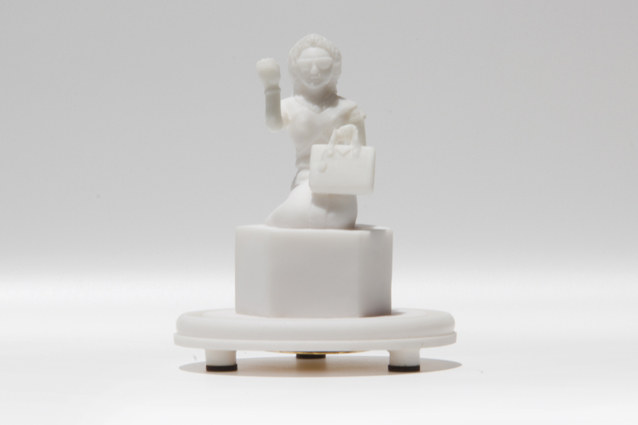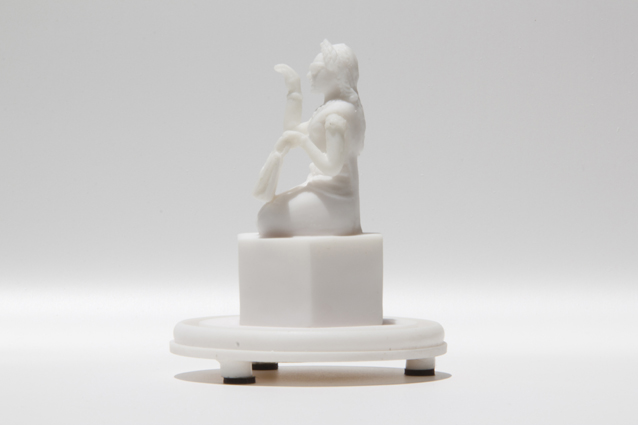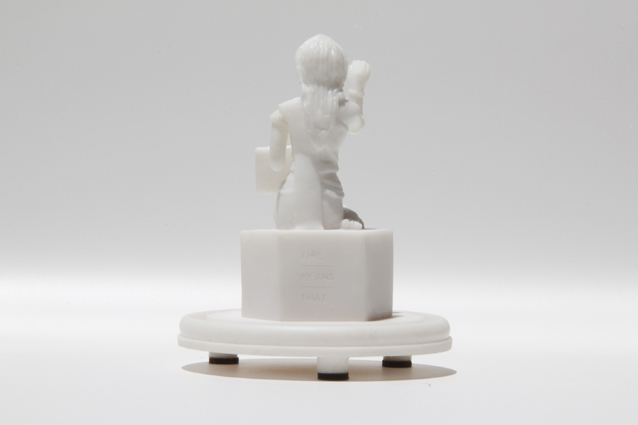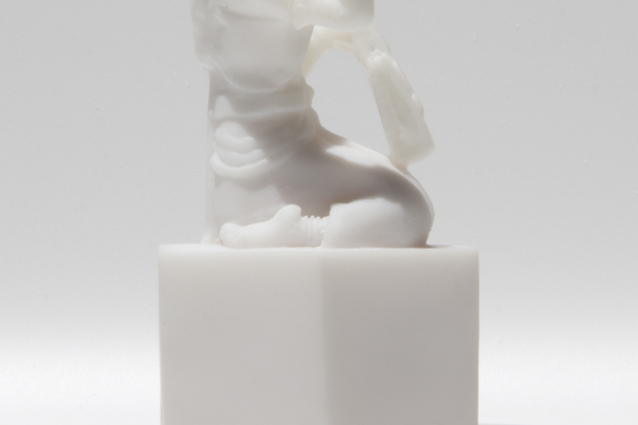.jpg)
MISS WELCOME. May 2015
Designers : Tunchanok Yavilas & Panjapol Kulpapangkorn
Curator : Francisco Polo
_
Nang Kwak is represented as a beautiful woman wearing a red dress. Her right hand is raised
in the Thai way of beckoning a customer, with the palm of the hand pointing downwards. Her left
hand is resting on her side or holds a bag full of gold on her lap
Miss Well-come its a interested Thai object, which has its own story, content and element. Miss Welcome its the first project of the design duo
This Means That and its focused on the traditional Thai "Nang-Kwak".
Nang Kwak is represented as a beautiful woman wearing a red dress (not always, but more often than other colors) fashioned in the Thai. She also wears a golden crown on her head and is in the sitting or kneeling position.
Her right hand is raised in the Thai way of beckoning a customer, with the palm of the hand pointing downwards. Her left hand is resting on her side or holds
a bag full of gold on her lap.
The present iconographic figure of Nang Kwak evolved from Mae Po Sop, the Siamese rice goddess, in recent times. The only difference is that she is not wearing the harvested rice sheaf on her right shoulder. The iconography of these goddesses is based in the Hindu goddess Sri Lakshmi, but their true origins are local and more ancient.
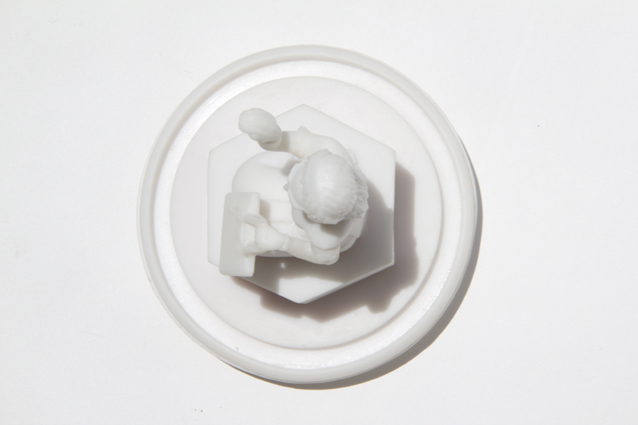
Nang Kwak in White and Gold Edition for Aybar Gallery
Nang Kwak is a benevolent spirit. She is deemed to bring luck, especially in the form of money, to the household. She is the patron Deity of all Merchants and Salesmen and can be seen in almost every business establishment in Thailand.
Thai people like to have a figurine or cloth poster (called a Pha Yant,or Yantra Cloth) of this goddess in their home or shop, where it is often placed by the shrine. Some people also wear amulets with her figure around the neck, which is a logical development, due to the fact that many people in Thailand must travel around to sell their wares, which makes a portable nang Kwak amulet the obvious choice for such a person.
The position of her hand in present-day iconography is quite likely borrowed from the Japanese Maneki Neko beckoning cat.
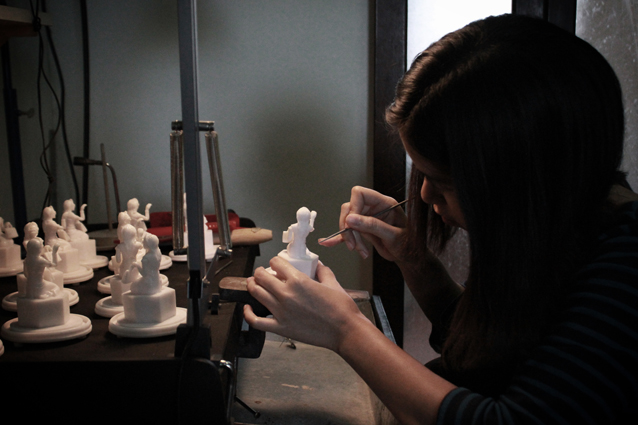
Handmade process of Miss Welcome making
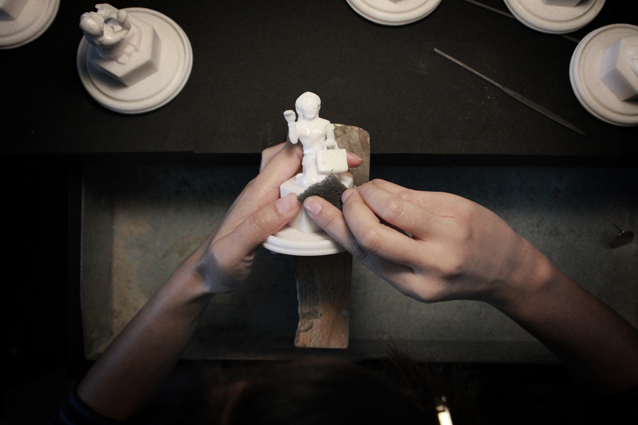
Polishing
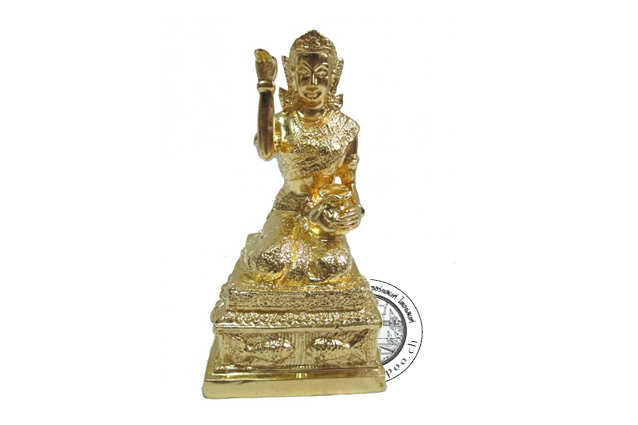
Original Gold Nang Kwak
One Buddhist legend presents Nang Kwak as Nang Supawadee. About 2500 years ago, before or during the time when Buddhism was beginning to
spread, in the small town of Michikasandhanakara, in the Indian province of Sawadtii, there was a married couple, Sujidtaprahma and his wife Sumanta,
who had a daughter named Supawadee. They were merchants who sold small amounts of wares on the markets, only earning just enough to maintain
their small family from day to day. One day, they were discussing their hopes and dreams for the future, and decided that they should try to expand their
business to make more profit and begin to think of being able to save something for their old age.
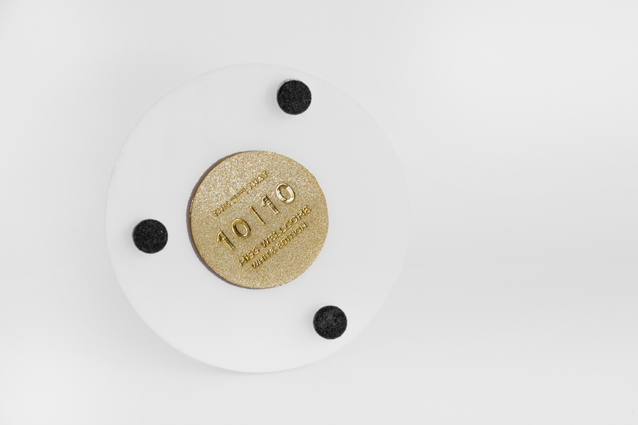
Gold-plated Limited Edition detail in Miss Welcome white edition commissioned by Aybar Gallery
Miss Welcome is a handmade design in the complete process of the making, occasional small imperfections are the result of the craft manufacturing process,
and expresses the originality of the product.
Materials :
The designers use Resin as its the same material of the Original Nang Kwak.
Gold plated brass.
Size :
H 10,5 x D 8 cm
Miss Welcome white edition is a Limited Edition of 10 pcs worldwide commissioned and for sale exclusively at Aybar Gallery, for more information dont hesitate to contact us or visit our shop on line
Photo courtesy of the designers, Tunchanok Yavilas and Panjapol Kulpapangkorn
